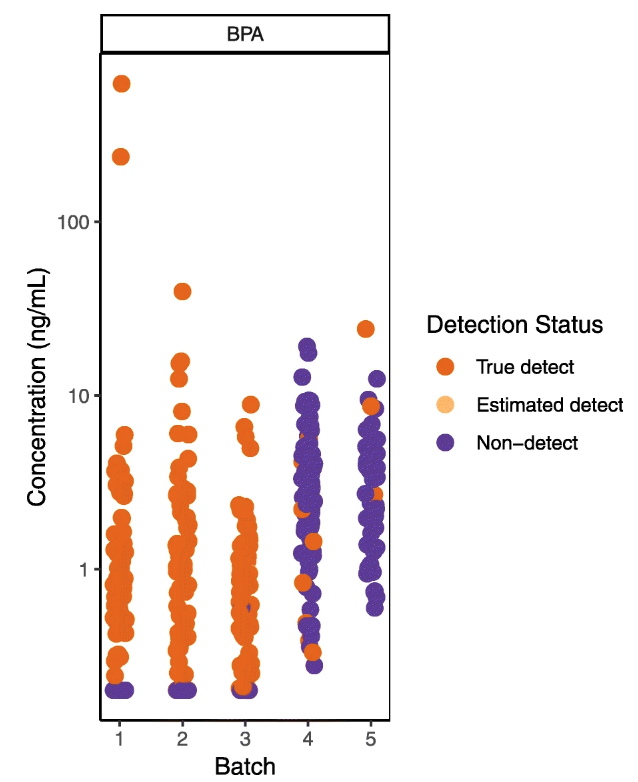Difference between revisions of "Main Page/Featured article of the week/2021"
Shawndouglas (talk | contribs) (Created as needed.) |
Shawndouglas (talk | contribs) (Added last week's article of the week) |
||
| Line 17: | Line 17: | ||
<!-- Below this line begin pasting previous news --> | <!-- Below this line begin pasting previous news --> | ||
<h2 style="font-size:105%; font-weight:bold; text-align:left; color:#000; padding:0.2em 0.4em; width:50%;">Featured article of the week: June 7–13:</h2> | <h2 style="font-size:105%; font-weight:bold; text-align:left; color:#000; padding:0.2em 0.4em; width:50%;">Featured article of the week: June 14–20:</h2> | ||
<div style="float: left; margin: 0.5em 0.9em 0.4em 0em;">[[File:Fig3 Fairchild FrontPubHealth2018 6.jpg|240px]]</div> | |||
'''"[[Journal:Epidemiological data challenges: Planning for a more robust future through data standards|Epidemiological data challenges: Planning for a more robust future through data standards]]"''' | |||
Accessible [[Epidemiology|epidemiological]] data are of great value for emergency preparedness and response, understanding disease progression through a population, and building statistical and mechanistic disease models that enable forecasting. The status quo, however, renders acquiring and using such data difficult in practice. In many cases, a primary way of obtaining epidemiological data is through the internet, but the methods by which the data are presented to the public often differ drastically among institutions. As a result, there is a strong need for better data sharing practices. This paper identifies, in detail and with examples, the three key challenges one encounters when attempting to acquire and use epidemiological data: (1) interfaces, (2) data formatting, and (3) reporting. ('''[[Journal:Epidemiological data challenges: Planning for a more robust future through data standards|Full article...]]''')<br /> | |||
|- | |||
|<br /><h2 style="font-size:105%; font-weight:bold; text-align:left; color:#000; padding:0.2em 0.4em; width:50%;">Featured article of the week: June 7–13:</h2> | |||
<div style="float: left; margin: 0.5em 0.9em 0.4em 0em;">[[File:Fig1 Udesky EnviroHealth2019 18.png|240px]]</div> | <div style="float: left; margin: 0.5em 0.9em 0.4em 0em;">[[File:Fig1 Udesky EnviroHealth2019 18.png|240px]]</div> | ||
'''"[[Journal:Wrangling environmental exposure data: Guidance for getting the best information from your laboratory measurements|Wrangling environmental exposure data: Guidance for getting the best information from your laboratory measurements]]"''' | '''"[[Journal:Wrangling environmental exposure data: Guidance for getting the best information from your laboratory measurements|Wrangling environmental exposure data: Guidance for getting the best information from your laboratory measurements]]"''' | ||
Revision as of 16:29, 21 June 2021
|
|
If you're looking for other "Article of the Week" archives: 2014 - 2015 - 2016 - 2017 - 2018 - 2019 - 2020 - 2021 |
Featured article of the week archive - 2021
Welcome to the LIMSwiki 2021 archive for the Featured Article of the Week.
Featured article of the week: June 14–20:"Epidemiological data challenges: Planning for a more robust future through data standards" Accessible epidemiological data are of great value for emergency preparedness and response, understanding disease progression through a population, and building statistical and mechanistic disease models that enable forecasting. The status quo, however, renders acquiring and using such data difficult in practice. In many cases, a primary way of obtaining epidemiological data is through the internet, but the methods by which the data are presented to the public often differ drastically among institutions. As a result, there is a strong need for better data sharing practices. This paper identifies, in detail and with examples, the three key challenges one encounters when attempting to acquire and use epidemiological data: (1) interfaces, (2) data formatting, and (3) reporting. (Full article...)
|











